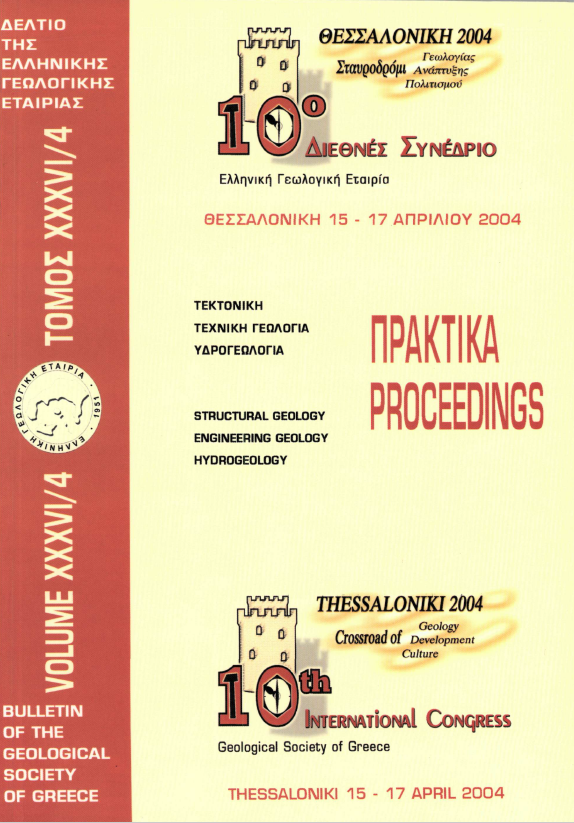THE RELATIONSHIP BETWEEN FRACTURED TECTONIC AND GROUNDWATER RESERVOIR OF MASSIVE FORMATIONS OF OSSA MOUNTAIN (E. THESSALY, GREECE)
Résumé
Ossa mountain is an area of great hydrogeological interest due to its geological structure. In this Paper the massive lithological formations and the tectonic structure are presented in relation to the forming of Ossa hydrogeological conditions. The groundwater flow directions are directly depended on the dominant anticline structure of Ossa mountain. The observing of field measurements as well as the processing of aerial photos reviled some transversal zones of high fracture. A great amount of groundwater is moving through some main zones of NNE direction as well as some secondary zones of N-S and E-W directions. A direct relationship is shown between tectonical structures and springs. The hydrochemical character of aquifers are presented through chemical analysis. Specifically, the detected Ca-HC03 reveals waters from karstic formations, while Ca-Mg-HC03, Ca-Mg-Na-HC03 reveals origins from metamorphic formations.
Article Details
- Comment citer
-
Σταμάτης Γ., & Μιγκίρος Γ. (2004). THE RELATIONSHIP BETWEEN FRACTURED TECTONIC AND GROUNDWATER RESERVOIR OF MASSIVE FORMATIONS OF OSSA MOUNTAIN (E. THESSALY, GREECE). Bulletin of the Geological Society of Greece, 36(4), 2077–2086. https://doi.org/10.12681/bgsg.16707
- Rubrique
- Hydrology and Hydrogeology

Ce travail est disponible sous licence Creative Commons Attribution - Pas d’Utilisation Commerciale 4.0 International.
Authors who publish with this journal agree to the following terms:
Authors retain copyright and grant the journal right of first publication with the work simultaneously licensed under a Creative Commons Attribution Non-Commercial License that allows others to share the work with an acknowledgement of the work's authorship and initial publication in this journal.
Authors are able to enter into separate, additional contractual arrangements for the non-exclusive distribution of the journal's published version of the work (e.g. post it to an institutional repository or publish it in a book), with an acknowledgement of its initial publication in this journal. Authors are permitted and encouraged to post their work online (preferably in institutional repositories or on their website) prior to and during the submission process, as it can lead to productive exchanges, as well as earlier and greater citation of published work.



